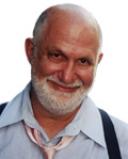Addiction
Normalizing Drug Use
Drug use does not become and remain addictive more often than other involvements
Posted April 25, 2014
The drug policy battle in the U.S. isn't about medical marijuana, or even legalizing marijuana.
It's about normalizing drug use.
Do drugs create different experiences from other involvements we are familiar with—are they more compelling, more inescapable, less controllable, more inexorable in their progression to addiction than other experiences that we encounter daily?
They are not.
Three theorists who make this point are Bruce Alexander, Carl Hart, and me.* Bruce shows that rats provided ordinary life alternatives in Rat Park (including, especially, the opportunity for sex) prefer these to continuing their habituated use of morphine solution. Carl shows that the supposedly inevitable negative effects of methamphetamines are overstated—as is obvious from their sharing a chemical structure with Adderall. As for crack, Carl describes in High Price his upbringing in a Miami ghetto prior to the crack epidemic—and how the drug had no substantial effect on the social pathology that predated the drug's appearance.
My argument in Love and Addiction was that people form extremely pathological involvements with a large number of powerful experiences (love and sex being the most prominent examples, but also including gambling, electronic games, eating, et al.). I (and co-author Archie Brodsky) meant by pointing this out that drugs did not have the special quality of "addictiveness." But, instead of recognizing this commonality between things we all know about and drug experiences, advocates for sex and love addiction (e.g., Benoit Denizet-Lewis) affixed the standard 12-step, loss-of-control meme to these other addictions. Rather than normalizing drug experiences, they pathologized non-drug experiences.
By and large, people don't accept Bruce's, Carl's, and my idea that drug responses fall in the range of normal human experiences, or my idea of the equivalency of drug and behavioral addictions (which is now the American Psychiatric Association's official position). (Please don't answer, "You don't mean physiologically addictive." See The Meaning of Addiction.) Americans carry too much cultural baggage to allow those ideas in. Instead, we think drugs—especially narcotics, and most especially heroin, followed by cocaine, crack and meth—are "truly" addictive. In fact, did you know cocaine was only declared addictive in the 1980s, after a century and more of experience with the drug?
Flash forward to the present, where an article in a major journal showed marijuana produced abnormal fMRI results in regular pot smokers.
So what? As Maia Szalavitz noted, these were normal subjects, so what did these brain images prove? And, as Ilse Thompson and I pointed out in Recover! Stop Thinking Like an Addict, measurable dopamine and fMRI responses are produced by every notable human experience, including seeing a baby smile.
So what?
Maia goes on to cite statistics from the 2012 National Survey of Drug Use and Health, in which fewer than one percent of Americans have a serious marijuana problem, although 48 percent have used marijuana in their lives. Why, that's less than two percent of everyone who has ever used the drug who abuse or are addicted to the substance currently.
That is so unlike dangerous drugs to which everyone rapidly becomes permanently addicted!
Not exactly. Here are the lifetime use figures for heroin (2.6 percent), cocaine (18 percent), crack (5 percent), and meth (6 percent):
Here are the current abusers/addicts with these drugs: heroin (0.1 percent), cocaine (0.4 percent), crack (not listed), meth (only stimulants listed = 0.2 percent). So, for heroin, that's four percent of ever users who are addicted, and for cocaine about the same as for marijuana (around 2 percent). While meth and crack can't be calculated, the figure is clearly a small minority (less than 10 percent).
What are we to make of that? According to government surveys, people rarely find even the most addictive, dangerous drugs to be, well, addictive and dangerous. Please don't answer, "People don't tell the truth in government surveys." In their comprehensive follow-up of Vietnam vets addicted to heroin in Asia, Lee Robins and her colleagues found that users of heroin stateside were no more likely to consume that drug compulsively than were users of other illicit drugs. Based on this and other research, I said in The Meaning of Addiction, "heroin does not appear to differ significantly in the potential range of its use from other types of involvements, and even compulsive users cannot be distinguished from those given to other habitual involvements in the ease with which they desist or shift their patterns of use."
As I said there, "This book embraces rather than evades the complicated and multifactorial nature of addiction. Only by accepting this complexity is it possible to put together a meaningful picture of addiction, to say something useful about drug use as well as about other compulsions, and to comprehend the ways in which people hurt themselves through their own behavior as well as grow beyond self-destructive involvements."
N'est-ce pas?
________________________
* My friend Adi Jaffe made me aware that Bruce, Carl, and I shared this outlook, calling all of us (disapprovingly) radical environmentalists.
Stanton Peele has been empowering people around addiction since writing, with Archie Brodsky, Love and Addiction in 1975. He has developed the on-line Life Process Program. His new book (written with Ilse Thompson) is Recover! Stop Thinking Like an Addict with The PERFECT Program. Follow Stanton on Twitter and at www.peele.net (newly renovated).




